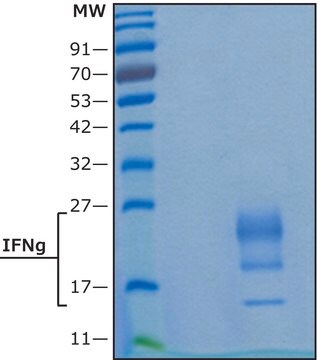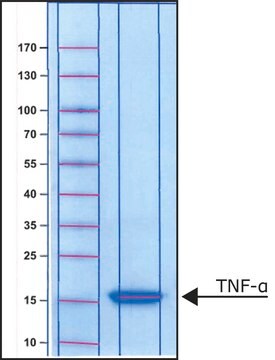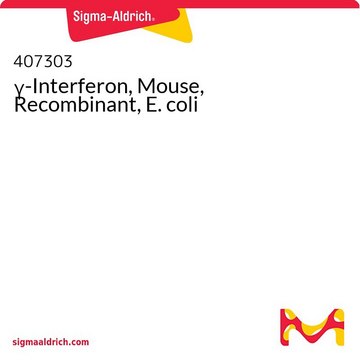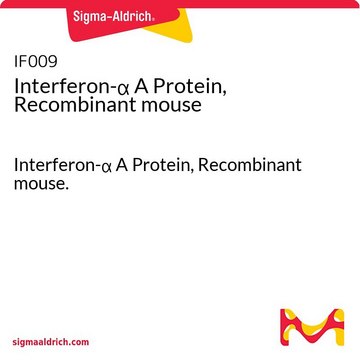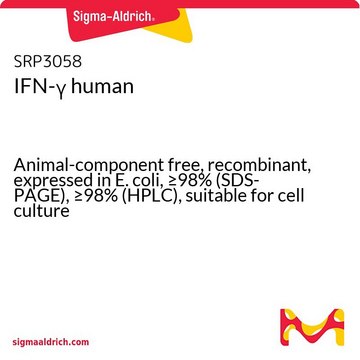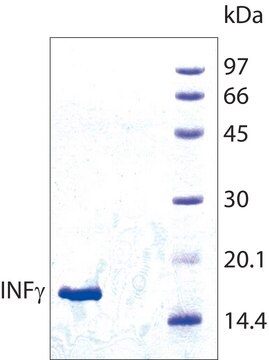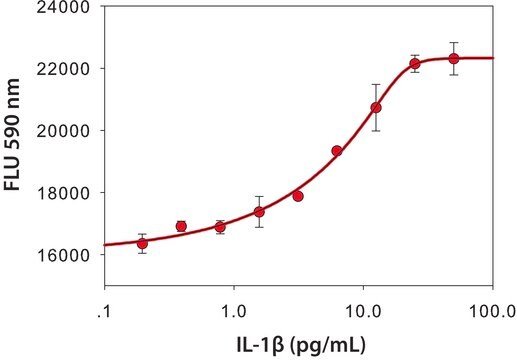IF005
Interferon-γ Protein, Recombinant mouse
The Interferon-gamma protein (or IFN-gamma protein) is a regulatory protein produced by activated NK cells & CD4+TCRalpha/beta+, CD8+TCRalpha/beta+ & TCRgamma/delta+ T cells.
Synonym(s):
IFN γ, IFN g, IFN gamma, INF γ, INF g, INF gamma
About This Item
Recommended Products
biological source
mouse
Quality Level
assay
>98% (SDS-PAGE and HPLC)
form
liquid
specific activity
≥1.0 x 10E7 U/mg
manufacturer/tradename
Chemicon®
technique(s)
cell culture | mammalian: suitable
impurities
<0.1 ng/μg endotoxin (of IFN-gamma; 1EU/μg)
input
sample type mesenchymal stem cell(s)
sample type hematopoietic stem cell(s)
shipped in
dry ice
General description
Application
Biochem/physiol Actions
Physical form
Storage and Stability
Legal Information
Disclaimer
Storage Class
12 - Non Combustible Liquids
wgk_germany
WGK 2
flash_point_f
Not applicable
flash_point_c
Not applicable
Certificates of Analysis (COA)
Search for Certificates of Analysis (COA) by entering the products Lot/Batch Number. Lot and Batch Numbers can be found on a product’s label following the words ‘Lot’ or ‘Batch’.
Already Own This Product?
Find documentation for the products that you have recently purchased in the Document Library.
Customers Also Viewed
Our team of scientists has experience in all areas of research including Life Science, Material Science, Chemical Synthesis, Chromatography, Analytical and many others.
Contact Technical Service

